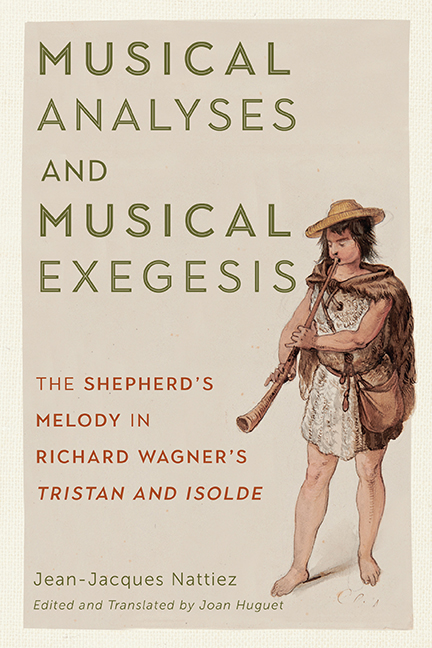 Musical Analyses and Musical Exegesis
Musical Analyses and Musical Exegesis Book contents
- Frontmatter
- Dedication
- Contents
- Foreword to the French Edition
- Preface
- Introduction: The English-Horn Solo, My Approach, and Models of Analysis and Musical Meaning
- Part I Immanent Analysis of the English-Horn Solo’s Musical Structures
- Part II Esthesic Analysis
- Part III Poietic Analysis
- Part IV Hermeneutics
- Conclusion: The Validity of Structural Analyses and Interpretations
- Bibliography
- Index
6 - Esthesic Analysis of the Solo’s Semantic Associations
Published online by Cambridge University Press: 02 June 2021
- Frontmatter
- Dedication
- Contents
- Foreword to the French Edition
- Preface
- Introduction: The English-Horn Solo, My Approach, and Models of Analysis and Musical Meaning
- Part I Immanent Analysis of the English-Horn Solo’s Musical Structures
- Part II Esthesic Analysis
- Part III Poietic Analysis
- Part IV Hermeneutics
- Conclusion: The Validity of Structural Analyses and Interpretations
- Bibliography
- Index
Summary
Musical Semantics or Hermeneutics?
For audience members at a performance of Tristan und Isolde, the overall meaning of the English-horn solo is established by what they hear and see onstage, assuming that the director and set designer follow Wagner's stage directions. The composer writes: “When the curtain rises, a shepherd plays a sad and melancholy melody on a Schalmei offstage. Shortly thereafter, the shepherd appears onstage.” The shepherd arrives onstage while playing his instrument, shortly before singing his first line: “Kurwenal! Hey! Say, Kurwenal! Tell me, friend!” When the solo is presented in its dramatic context, audience members perceive more complex and nuanced emotive and affective connotations than the two adjectives given in Wagner's stage instructions can possibly convey. How does the audience recognize and understand these connotations? The objective of this chapter is to account for these first-hand associations and experiences through external esthesic analysis.
Experimental psychology has developed techniques not only for understanding how listeners perceive a work's immanent structures, but also for analyzing the expressive content, evocation, and meaning of music, as exemplified by the work of Robert Francès. His experimental studies later became the basis for musical semantics, most notably in the works of Michel Imberty, who serves as the founder and principal scholar of this sub-discipline. Imberty writes: “Musical meaning arises through a variety of activities and behaviors, supported by both language and what we will call semantic activities…. Nattiez restricts the use of the word semantic, applying it only to experimental studies that study how musical meaning is created.”
As will become very evident over the course of this study, I no longer restrict the use of the term musical semantics to experimental approaches to musical meaning, although I did indeed do so in my very first published semiological work. As I have discussed elsewhere, I recognize two domains in addition to experimental studies that aid in our explorations of musical meaning: the ethnomusicological research and musicological investigations which I currently consider as part of musical hermeneutics. I will begin to discuss these domains in part III of the present study (poietics), and will expand upon this discussion in part IV (hermeneutics). Imberty's definition of semantics makes the important point that musical meaning is supported by language.
- Type
- Chapter
- Information
- Musical Analyses and Musical ExegesisThe Shepherd's Melody in Richard Wagner's <I>Tristan and Isolde</I>, pp. 190 - 232Publisher: Boydell & BrewerPrint publication year: 2021


